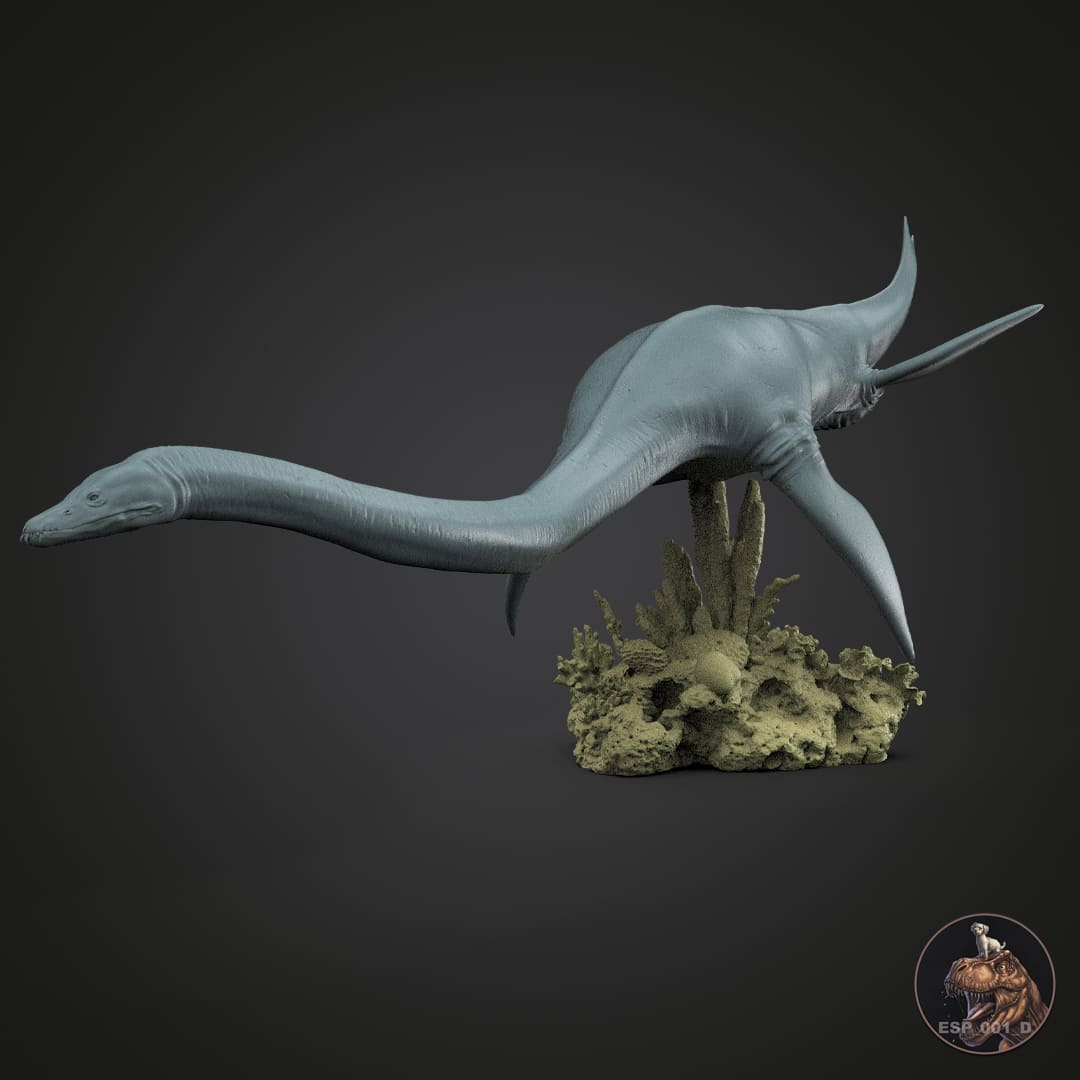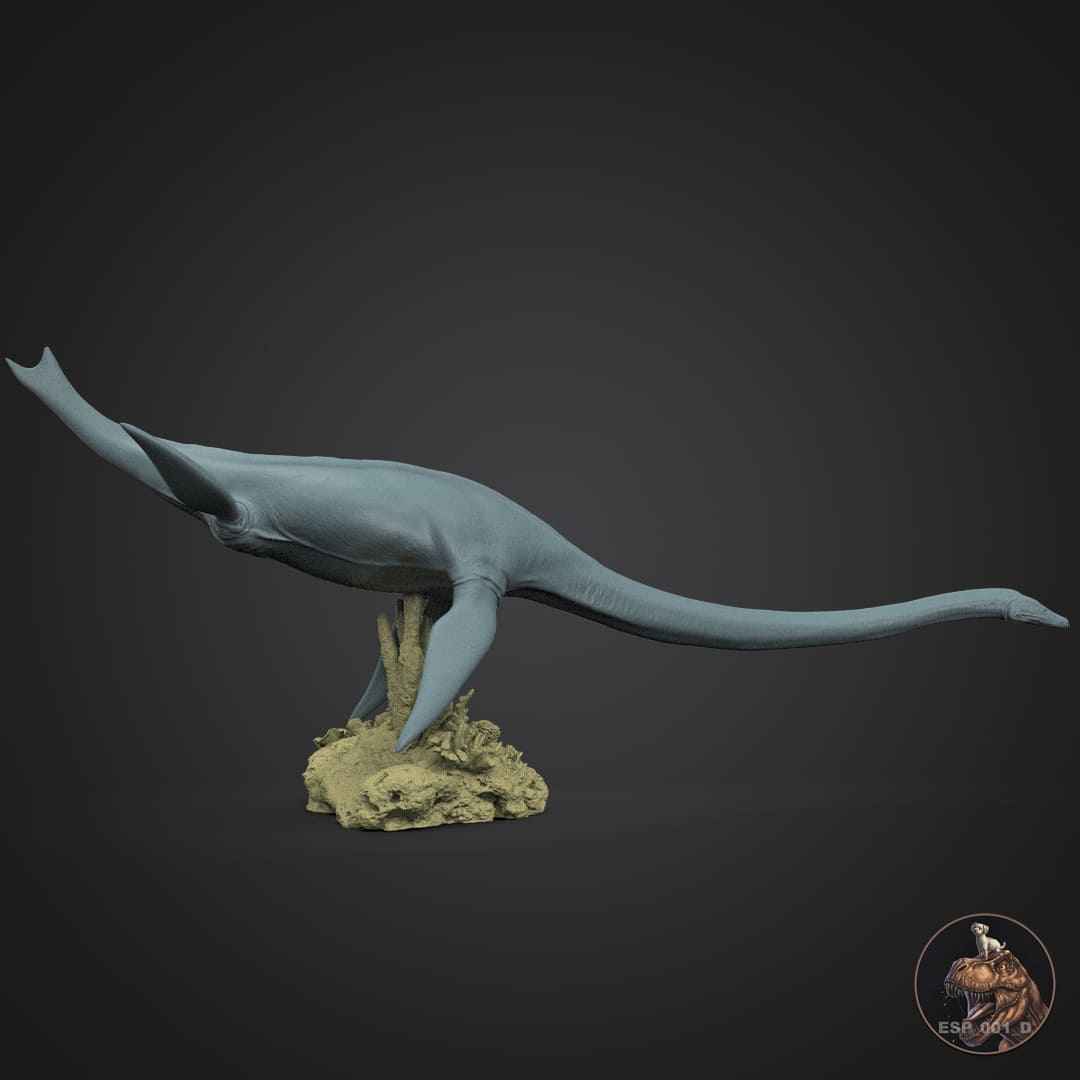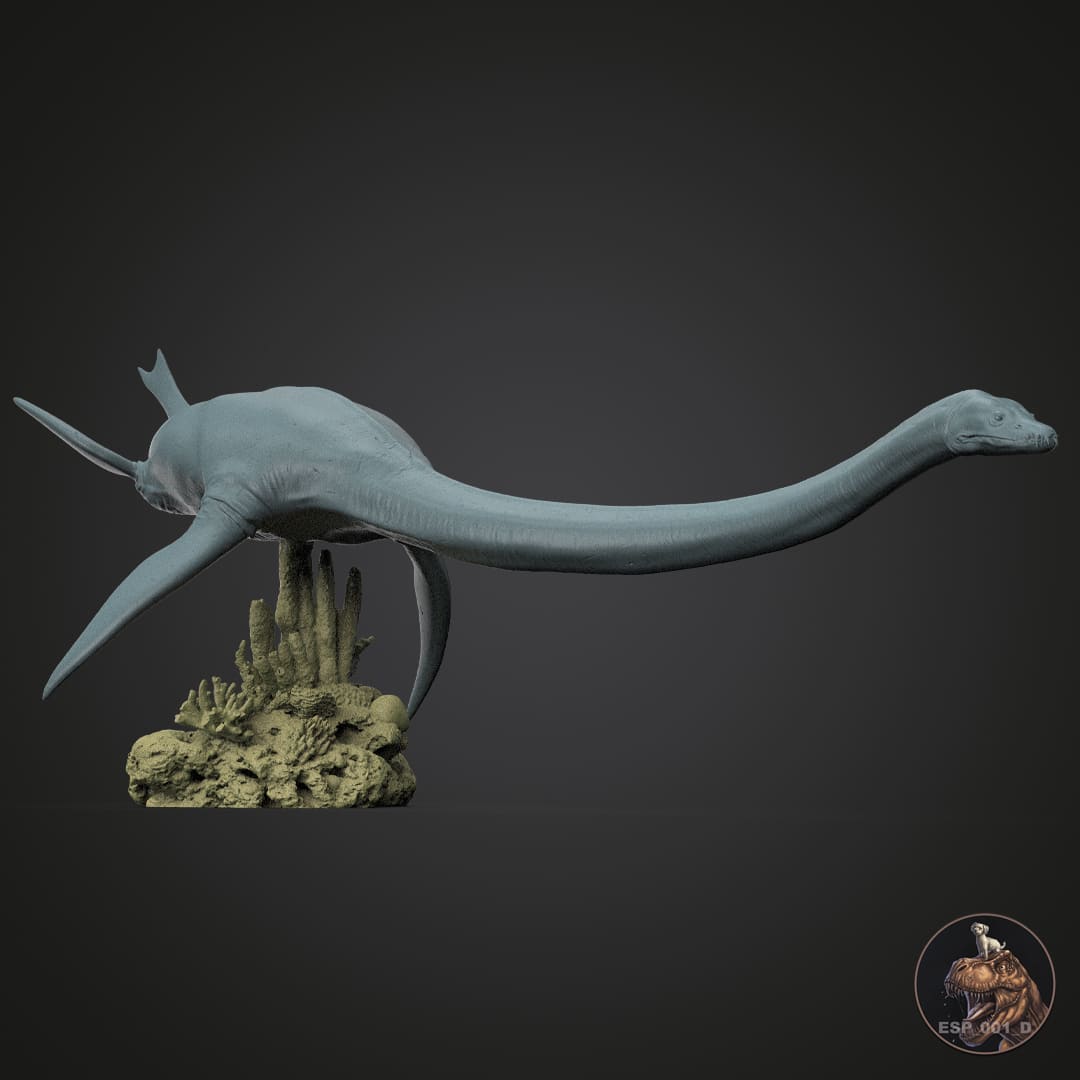



Elasmosaurus platyurus
Do you want another scale?
Contact us and we will make it possible!
How will you receive your replica?
In the unprimed and primed variants, you will receive the complete replicas except for the large models, where you will receive an assembly kit.
In the hand-painted variant, the replicas will be delivered complete.
How does the painting service work?
We created a private chat for you where you will have direct communication with our painter , being able to choose your preferred color schemes and follow the hand painting process closely.
Pairs well with

Elasmosaurus platyurus
If you have any questions, you are always welcome to contact us. We'll get back to you as soon as possible, within 24 hours on weekdays.
Shipping Information
Visit our shipping policy page to find all the information.
Customer Support
Give us a few details and we’ll offer the best solution. Connect by chat or email.
We are available 24/7.
FAQ’s
Visit our FAQ's page to find answers to common questions.
Contact Us
We'd love to hear from you. We are here to help. Visit our contact page to send us a message.
Product details
Elasmosaurus platyurus is a marine reptile from the Late Cretaceous that lived approximately 80 million years ago. This member of the plesiosaur family is famous for its extremely long neck, which makes up almost half of its total length, which is estimated to be around 10.5 meters (35 feet). Its neck is thought to have contained up to 72 vertebrae, giving it great flexibility for moving in the water.
Elasmosaurus had a streamlined body, with a relatively short, flattened torso culminating in a short tail. Its limbs had transformed into broad, flat flippers, ideal for propulsion in the water. These flippers allowed it to swim with bird-like movements, using the front flippers to generate most of the thrust and the back flippers to maneuver.
The skull of Elasmosaurus was relatively small compared to its body, with long, thin jaws packed with sharp teeth. This suggests that it was a predator that hunted fish and other small marine animals, possibly stalking its prey from below or using its long neck to reach it without having to move its massive body.
Recent studies have re-evaluated the function of its neck, and although it was initially thought that Elasmosaurus used it to hunt in deep water, it is now considered that it could be more versatile, allowing it to stalk its prey at different levels of the water, or even in shallower areas.
The discovery of more fossils and the advance in analysis techniques have improved the understanding of the biomechanics of Elasmosaurus, including how its body mass was distributed and how its bone structure supported its long neck in an aquatic environment. However, there is still debate about how this reptile used its neck in relation to its feeding and locomotor behavior. This creature represents one of the most extreme examples of evolutionary adaptation in marine reptiles, standing out for its unique anatomy and ecological specialization.
Approximate measurements of the Elasmosaurus:
- 1:60 scale assembly kit
- Length 147 mm
- Height 51 mm
- Width 50 mm
- Snout-tail length 167 mm
- 1:35 scale assembly kit
- Length 251 mm
- Height 88 mm
- Width 87 mm
- Snout-tail length 285 mm
Information about aftershocks
Collector's item ; Hyper-realistic replica, highly detailed and with a high degree of scientific precision.
Made to scale, prototyped in resin and with a scenic base in most of the models offered. If you like miniatures, both for collecting and for painting, we offer you a wide variety of scale replicas; All of them related to dinosaurs, extinct prehistoric fauna and current fauna.
So if you love dinosaurs and animals as much as we do, this is your favorite store to collect and paint them :)
We are authorized distributors of all the replicas and figures we offer. We use 3D printers with 8K - 14K resolution, and high-quality resins with additives to improve hardness and flexibility, thus offering replicas of impeccable quality.
Different scales will be used to make the replicas (depending on the size of the species), although we are open to making other suggested scales upon request as long as they fit in our printing trays, for which you will have to contact us via email and request the required size.
Replicas are supplied with the option of airbrush priming in dark grey. If you require another colour, please let us know which one you prefer in the box with special instructions for the seller. Without priming, we do not guarantee that the resin will accept paint.
We also offer the option of choosing a professionally painted replica, which is agreed upon throughout its development with the painter, through a private chat available.
Complete replica (one piece): We supply complete replicas in those models that are small, and models that are medium, large or not very bulky, will have the prerogative of being presented as a complete replica or assembly kit as the case may be.
Complete replicas will be supplied separately from their base.
Replica assembly kit: We supply replicas whose models are large, very large or bulky, only with this option.
The indicated replicas (generally composed of base, head, body and tail) will come prepared for the subsequent assembly that will be required by the client, by sanding, putty, adhesive or technique chosen by the client.
All replicas are thoroughly inspected before shipping and will be carefully packaged to prevent damage during transport.
Information about the models
The poses of the models aim to represent each character in the most scientifically viable way, thus revealing the life and customs of prehistoric and modern fauna.
Each character has its own personality and develops in different life scenarios; birth, adolescence and play, hunting, feeding, fighting, courtship, death and many other scenes from their daily life, always from the creative perspective of their designers.
Handmade
All orders are individually prepared on the cutter for subsequent prototyping, obtaining a resin part that will require post-processing by manual and ultrasonic cleaning, support removal, ultraviolet curing, labeling and packaging.

We are authorized distributors
We offer both our own physical replicas and those that have been modeled by many of the best 3D designers, in order to offer you the greatest possible variety.
Frequently Asked Questions
If you have any questions about products, orders or shipping, please read our FAQ page to learn more.

